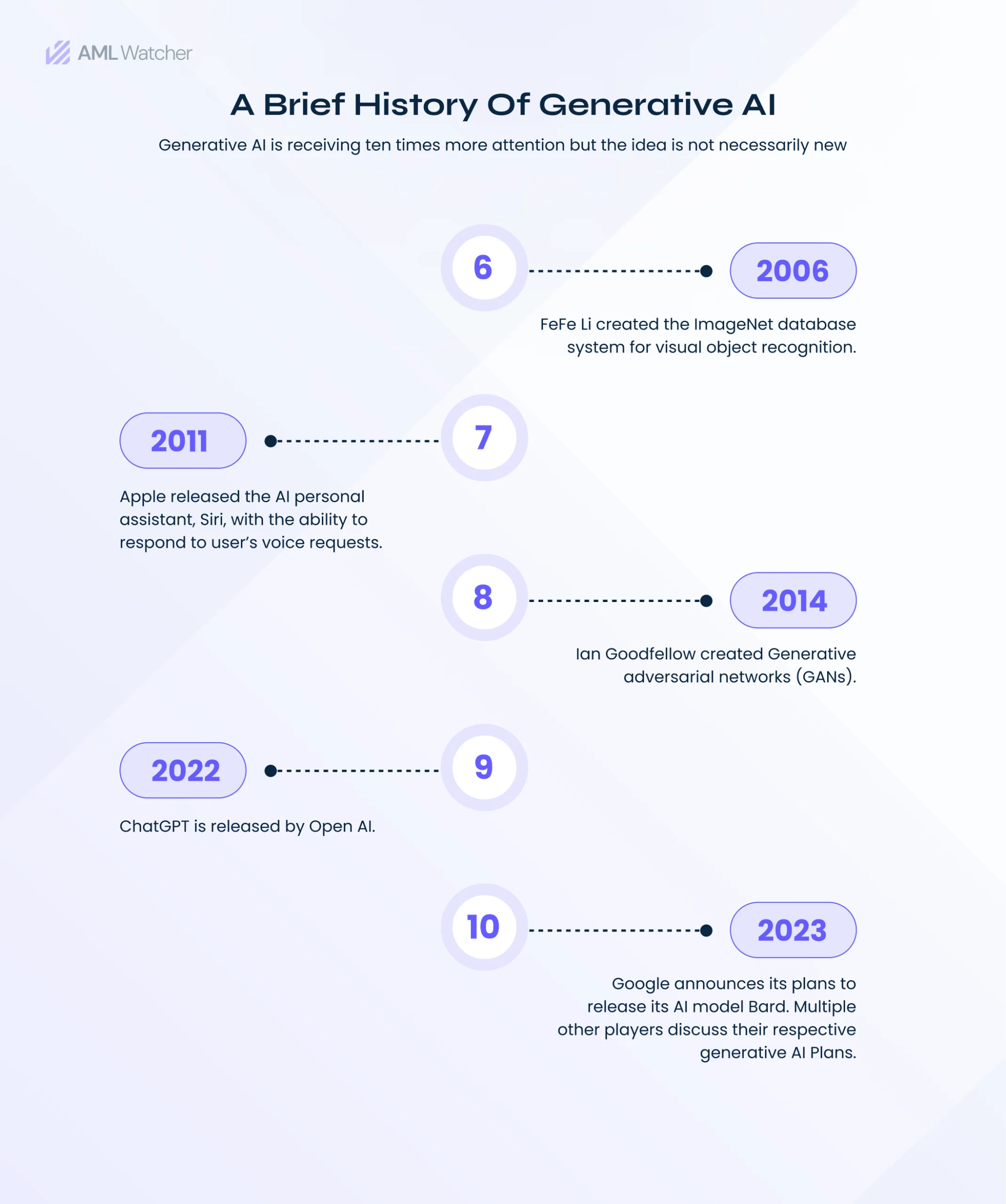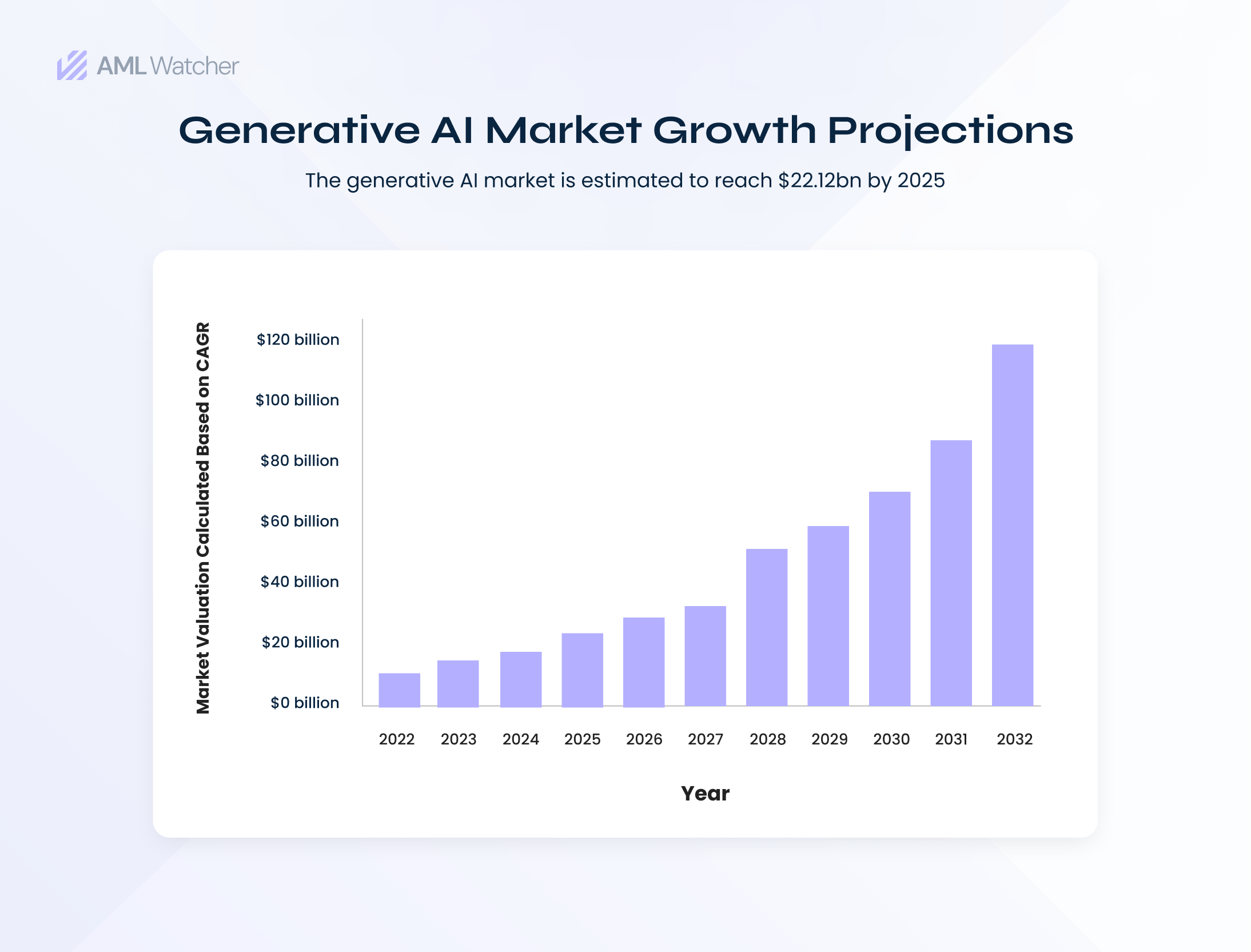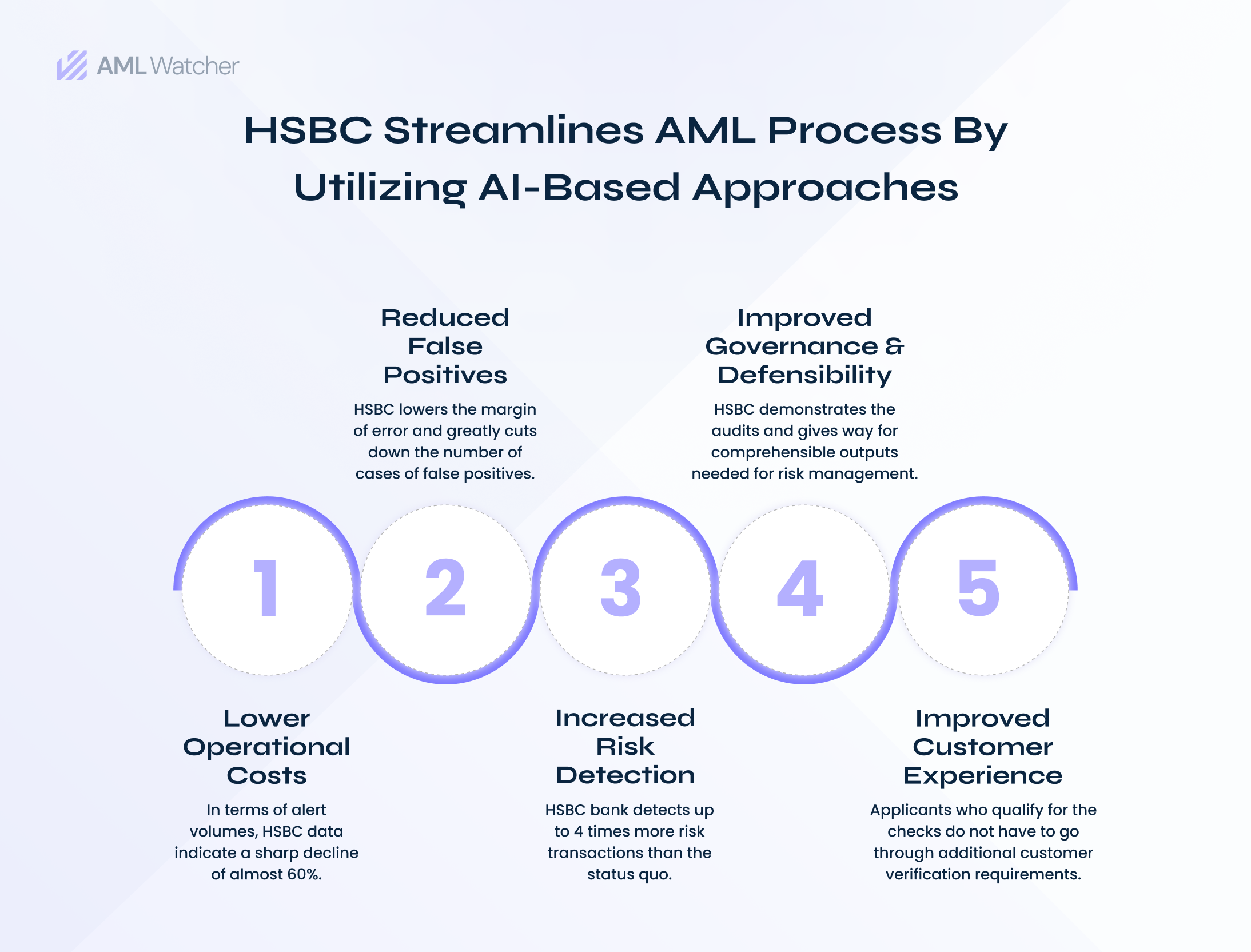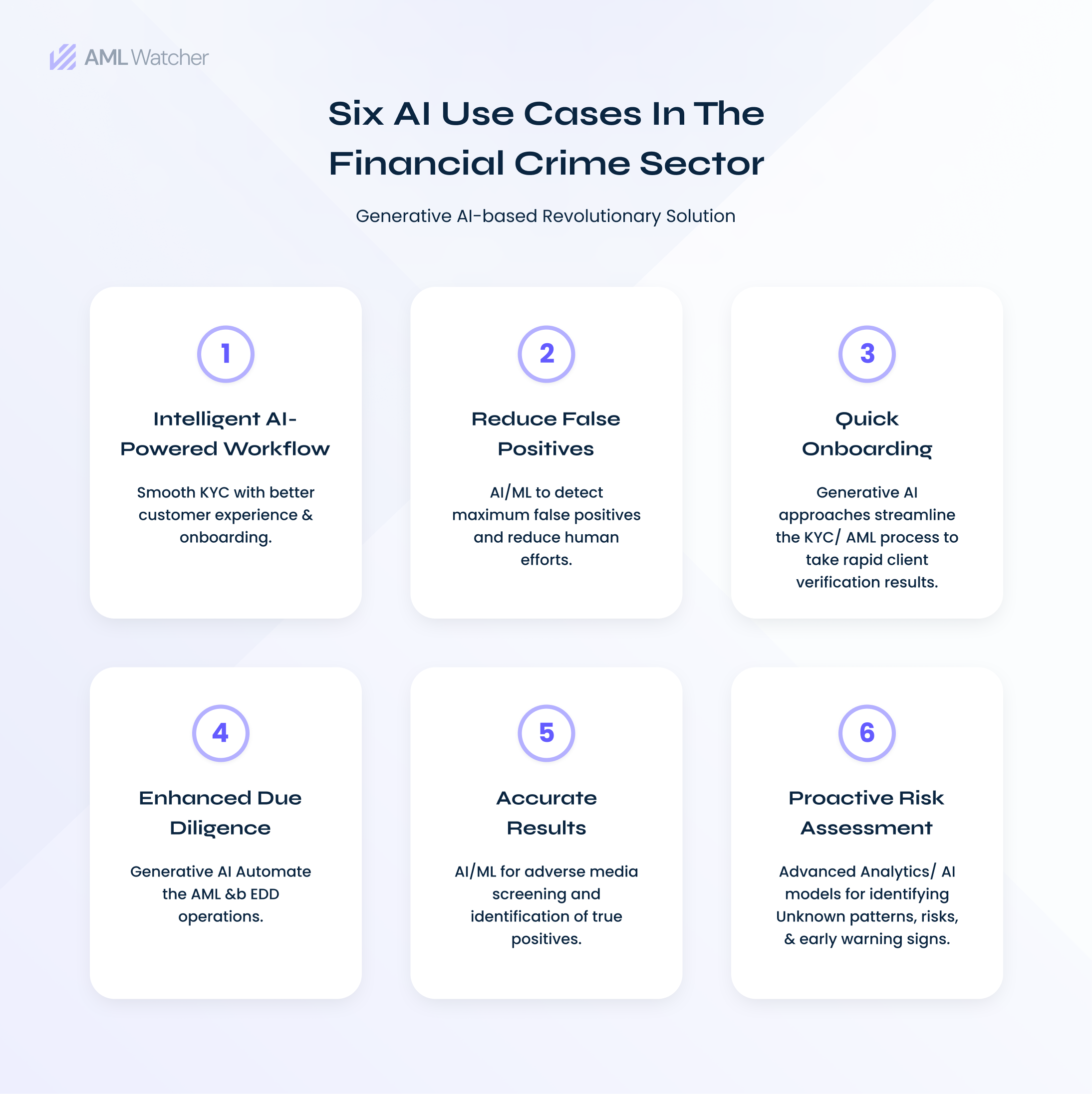
Is Generative AI Bringing A Shift In AML Compliance?
“The fight against financial crime turned into a much more critical and multifaceted fight, and the financial sector will use Artificial Intelligence functionality to counteract the latest strategies developed by fraudsters and scammers,” says Marcin Nadolny, head of fraud, fincrime, and data science SAS Company Europe, Middle East, and Africa.
“A financial institution will invest to implement new technologies to reduce the number of unauthorized payments that come from fraud and may be put under significant penalties for failing to meet Anti-money laundering regulatory requirements. Generative AI will be utilized with greater automation in processing and fraud detection,” the expert claims.
Generative Artificial Intelligence is emerging as a transformational innovation that has the power to produce accurate results, including visual data and media matter of par-level accuracy. On one hand, it has offered flexibility to financial institutions to detect profiles that Launders Money but on the other hand, it also comes to play a central role in committing financial and Money laundering crimes.
The rising complexity of the crime by fraudsters such as ‘deepfakes and synthetic identities’ has necessitated the adoption of modern AML Solutions for enhanced security, as well as easy detection, and prevention.
As per the international study, there was a 72% rise in fraudulent activity in 2022. Nearly 25% of those surveyed predicted that spending on anti-fraud technology would climb significantly by 2025. With generative artificial intelligence being regarded as a game-changer for many fields, it has become more of a challenge for the professionals involved in the prevention of financial crimes as it has taken another dimension of complexities and multi-fold nature.
It is critical for risk and compliance functions to reduce the barriers to innovative Gen AI that will act as global AML Checks to everything that the technology can do in an organization.
In this article, we illustrate why financial institutions should construct a flexible, powerful strategy of Generative AI for risk and compliance management and explain real-life cases of practicing AI models.
Let’s first grab the basic concept of Generative AI in financial institutions.
What Is The Concept Of Generative AI?
Generative AI falls under the umbrella of Artificial Intelligence. This sub-branch alone can automatically create wide variations of content such as text, images, audio, and videos without human intervention. The distributive capability of generative AI is the ground for a creative engine based on the principles of pattern recognition and predictive modeling. It can comprehend as well as replicate the key qualities of the input data such as inherent structures and digits by going through detailed training on numerous sets of data. Unlike in previous AI models where AI functions by analyzing existing information and producing content, the current AI generation performs an active analysis to come up with fresh content.
Emerging Generative AI In Financial Crimes
The fact that we see organizations investing more in artificial intelligence is proof that AI is becoming an area of concern in the future. In fact, according to Celent’s “Technology Transformation in Financial Crime Compliance Report” released in 2023, 73% of the respondents are against their current technology since they see it as insufficient; even as early as last year, 86% of the respondents defined their plan to boost the investment on AI technology over the next two years.
However, AI’s involvement in managing various Financial Crimes risks is undergoing a dynamic process where everything depends on the application of AI in the financial sector. The authorities around the world, for example, the US Anti-Money Laundering Act 2020 and the Europe AI Act, are caught between two competing values; protecting new technology innovations and encouraging their growth on the one hand, and maintaining an effective framework of AML/CFT Compliance and prevention of financial crimes on the other hand. The process leads to the establishment of Anti-money laundering policies and guidelines for AI development and more tech-driven solutions.
Let’s move forward and read how HSBC has taken multiple advantages with the utilization of robust AI strategies.
Case Study Of Generative AI Implementation By HSBC
As an international bank, HSBC has taken a bold step by collaborating with Google Cloud to use a machine learning-powered cloud-based solution as its main anti-money laundering transaction monitoring system. The fundamental component of the new detection system, known as Dynamic Risk Assessment (DRA), is Google Cloud’s AML AI-based risk detection solution. It allowed HSBC to have a higher fraud detection ability, more accurate outcomes, and a much shorter batch processing time for the large customer base thus finally completing the task in less time. Subsequently, HSBC was appreciated by the Celent Model Risk Manager of the Year Award 2023.
According to Celent, this is a paradigm shift in the way big banks are handling Financial Crimes and an obvious illustration of how cutting-edge technologies are taking over traditional technology as the go-to technology for AML Compliance in the future.
The Operationalization Of AI Tools In Financial Crime Detection
Financial crime investigation is a process of going through an extensive amount of data to find a pattern of fraud, strange transactions, suspicious activity, and much more. Generative AI brings about a paradigm shift in the crime investigation process by discovering fresh leads and thus augmenting the effectiveness of AI-based fraud detection systems. Generative AI can be leveraged in the fight against financial crime by:
Identification Of Anomalies
AI models can acquire and learn the normal patterns and behaviors represented in the transaction data and client interactions among other relevant data. Through time-to-time comparing the experiential data with learned models, AI generative algorithms produce the feasible outputs.
It detects anomalies in the process that are different from the usual actions. These anomalies could manifest the bank’s responsibility to inform about possible cases of fraud, Money laundering, or any financial crimes.
Fraud Scenario Modeling
Generative AI is capable of reconstructing all kinds of embezzlement scenarios by creating synthesizing fund transfer deals. As a result of the simulations the banks can address their vulnerability to various kinds of fraud and they can build very efficient defense systems. The real-life demonstrations will in turn lead to the identification of risk and the subsequent management of risk; this will boost the resilience of the whole system.
Generating Synthetic Data
Generative AI technologies create synthetic data sources that resemble real financial data. These synthetic data inputs could expand the data set that the fraud detection algorithms are parameterized on, enhancing their ability to see fraudulent patterns from a variety of situations and increasing their efficiency. Therefore, artificial data generation is another tool for the elimination of personal data exposure and a sinking need to utilize real-life sensitive data.
Improved Risk Evaluation
Artificial intelligence aided by generative AI will do the risk assessment by clustering the different factors together. By encompassing many data sources such as financial transaction histories, social media experiences, and online engagements, generative AI algorithms will streamline significantly the entire risk assessment process. It is through this detailed approach that financial institutions can achieve an easy way of restoring high-risk customers and their financial activities.
Behavioral Analysis
With the help of AI models such as Generative AI, investigations of customers’ behavior, transaction history, as well as any other relevant data can be done to point out the patterns that might be related to fraudulent activities. By knowing the normal behavior of individual customers, these models will be able to raise suspicion on dubious actions of customers like; a sudden change in spending habits, transactions that occur too often, or big transactions done without authorization.
To wrap it up, Generative Artificial Intelligence, which is here to signify the fast development and growth in the industry, is the crucial force to ignite a new productivity boom in financial services amongst others. Modeling analytics, integration with banking interfaces, machine learning in the process of structured content, and concentration on risk management, as well as compliance with AML Checks, are just the core aspects of technology changes.
It is critical for risk and compliance functions to remove the barriers to innovative Gen AI that will act as a check to everything that the technology can do in an organization.
While AI can shed light on where the money originated and how it was moved, the issue of AML/CFT Compliance pursuit is multi-faceted, with the challenge of excessive overreliance and a resulting decline in human efforts. Many argue that AI can be used to detect data with high accuracy rates, reduction of false positives, monitor efficiency in real-time, and adaptability to various tasks, however, they notice the role of human interference is still very significant in complex cases and situations. Any institution can implement AI-based solutions under the guidance of compliance expertise from specialized AML compliance services providers.
AML Watcher, a reliable AI-based fraud and risk detection platform, rolled out its comprehensive global sanctions screening for all institutions. Our 60000 plus sanction screening data lists, watchlists, and PEP lists are backed by robust machine learning AI and AML solutions that cater to the full AML Compliance coverage.
Comprehensive AML compliance functionality includes customer risk ratings, sanction/watchlist screening, customer due diligence, biometric AML Screening, case management, ongoing monitoring, and automated suspicious activity report filing.
Adopt our global data orchestration that is highly reliable to screen complete customer profiles for enhanced risk detection and reduced false positives, thus, providing reliable risk management. Institutions can get time-saving implementation with our on-premise solution that would integrate directly with the existing procedures thus completing the process quickly.
Are you interested in deploying a Gen AI-backed AML Monitoring and compliance solution for your organization?
Contact our compliance experts now to get more information about our AI-backed sanction screening solutions.
We are here to consult you
Switch to AML Watcher today and reduce your current AML cost by 50% - no questions asked.
- Find right product and pricing for your business
- Get your current solution provider audit & minimise your changeover risk
- Gain expert insights with quick response time to your queries








